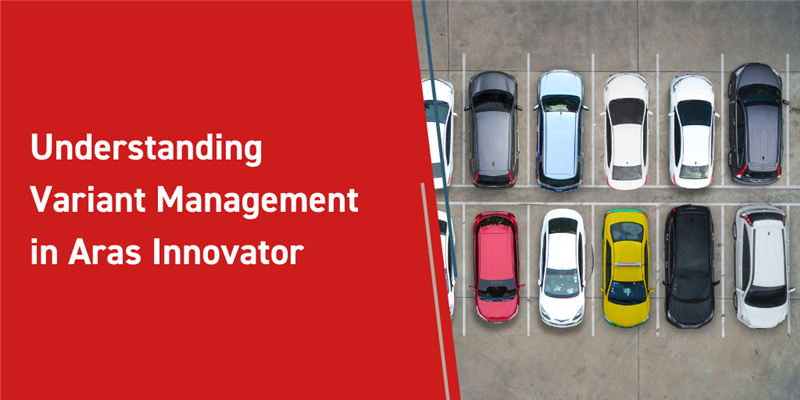Who doesn’t like more choices? Modular architecture enables an efficient configure-to-order strategy for product families and product platforms. This allows manufacturers to offer increased choices to their customers while optimizing cost and ensuring manufacturability.
Designing for product platforms with modular architecture is a complex task. Handling different product variants makes it even more complex because it requires careful organization of which options and combinations can work together. Aras Innovator can help. Our forthcoming Variant Management application helps users manage product variants from the start. Try it today in our Variant Management sample application available on github.
To learn the key concepts you’ll need to try it out, check out this video: Product Variability across the Digital Thread. Or, learn more about these concepts below.
Features, Options, and Rules
Understanding Variant Management in Aras Innovator relies on a few key concepts. First, you can think of any product as having a set of Features. Features are characteristics of a product such as material and size. In Aras Innovator, Options are discrete choices for each feature. A Size feature can have options like XS, S, M, L, or XL.
In Aras Innovator, users can author Rules that allow or restrict certain option combinations. Rules might stem from marketing requirements, technical compatibility, manufacturing requirements, regulatory requirements, or other reasons. Managing rules is done with a simple, intuitive “matrix” interface; or, with a helpful rule editor that helps you author the expressions.
In the Aras Innovator Variant Management application, you don’t have to manage variability all at one level of a product. You can divide them into smaller sets of features, options and rules. For a Bicycle family of products, for example, you could have the Control System and the Transmission variability represented separately, each with their own sets of rules. That way, different groups that engineer these systems can define and maintain their rules just for that system. Then, at a higher level of the “Bicycle” variability structure, rules can be written that span the Control System and the Transmission.
At the highest level of the product variability definition, features, options and rules are aggregated up from all of the lower levels, providing one central way to view and manage them. Or, you can view and manage them at the lower levels as well.
Breakdown Structures
In Aras Innovator, Breakdown Structures are used to decompose products into systems and subsystems based on modular architecture principles. Breakdown structures can include both fixed and variable components. Fixed components may include—for example—a user’s manual that is included no matter what options are selected for a bicycle.
The Breakdown Structure is represented in Aras as an overloaded structure containing all fixed and variable components—that is, all options available against their assigned features are visible.
Variable Components
Variable Components are containers for assets (such as Parts and Documents) that fulfill a specific purpose. For example, on the “Bicycle” family of products, the “Handlebar” variable component contains a number of Handlebar part numbers for a number of different handlebar types (e.g. flat, drop and raiser bar) and widths. Each part number in the Variable Component has its Usage Condition that identifies its valid usage. With a simple configuration, users can add other item types as assets, like Requirements, Software Items, and so on.
Variant Resolution
In Aras Innovator, variant resolution can be full or partial, where a BoM may be resolved from 150% down to 100% for full resolution; or, if the user wants to examine “What if” scenarios, they can leave the BoM partially unresolved. To resolve the structure, the user begins selecting desired options. As rules restricting certain option combinations are processed, options that are unavailable for selection based on those Rules are indicated in red text.
In this way, a resolved structure can result in an engineering Bill of Materials (eBOM) that represents the selected variant for use throughout the platform.
To view the full product demonstration, visit the Aras webinar replay, Product Variability across the Digital Thread and learn more about Aras Variant Management. Or, download the sample Variant Management application, available on github, and try it out today!

